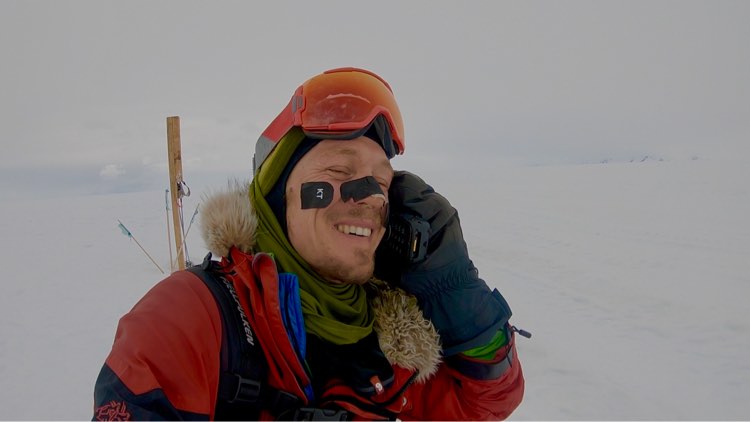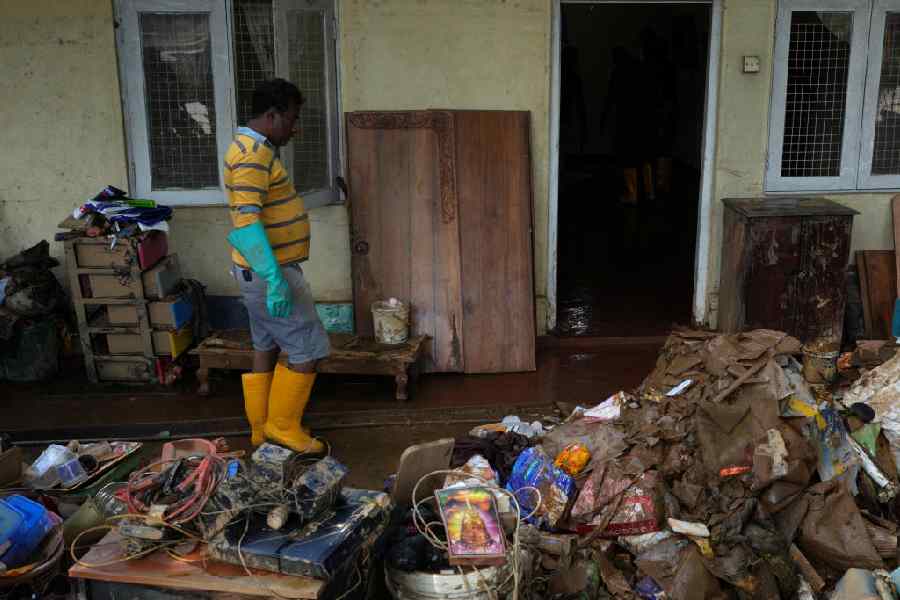The final miles of a nearly two-month race across Antarctica — a lonely effort marked by long days, short nights and stunning endurance — ended on Wednesday with a sprint to the finish.
In what could go down as one of the great feats in polar history, American Colin O’Brady, 33, covered the final 77.54 miles of the 921-mile journey across Antarctica in one final sleepless, 32-hour burst, becoming the first person ever to traverse Antarctica from coast to coast solo, unsupported and unaided by wind.
O’Brady’s transcontinental feat, which took him an actual total of 932 miles with some zigzags along the course, was remarkable enough; but to complete the final 77.54 miles in one shot — essentially tacking an ultramarathon onto the 53rd day of an already unprecedented journey — set an even higher bar for anyone who tries to surpass it.
“I don’t know, something overcame me,” O’Brady said in a telephone interview. “I just felt locked in for the last 32 hours, like a deep flow state. I didn’t listen to any music — just locked in, like I’m going until I’m done. It was profound, it was beautiful, and it was an amazing way to finish up the project.”

O'Brady begins his trek. Colin O'Brady via The New York Times
In the nearly two months racing on his own, O’Brady took only one half-day off — on November 29, he lost a skin from his ski and was forced to set up camp early, reglue the skin and lick his wounds.
O’Brady’s culminating effort joined some of the most remarkable achievements in polar history, including expeditions led by Norway’s Roald Amundsen and by Robert Falcon Scott of England, who battled Amundsen to become the first to reach the magnetic South Pole. There was also Borge Ousland’s magnificent traverse in 1996-97, when he became the first to cross the continent alone and unsupported — though he was aided by a kite.
Since then, at least three others have tried to duplicate Ousland’s feat without kites, raising the stakes and trimming the margin for error by several degrees. O’Brady became the first to succeed when he reached the finish early on Wednesday afternoon, the 54th day of his journey.
In 2016, Henry Worsley, an Englishman and a Special Forces veteran, died days after being airlifted from the ice for his own attempt. He had covered over 900 miles and came within 126 miles of the finish. In 2017, another Englishman, Ben Saunders, gave up the same quest at the South Pole. As of Wednesday, still another Englishman, Louis Rudd, 49, a close friend of Worsley’s, was on the ice.
Rudd had been racing O’Brady from the Messner Start on the Ronne Ice Shelf to the Ross Ice Shelf at the foot of Leverett Glacier. The two adventurers departed Punta Arenas, Chile, on Halloween and then the Antarctic Logistics & Expeditions base camp at Union Glacier on November 3.

O'Brady pulls his gear behind him on Day 50 of his trip. Colin O'Brady via The New York Times
O’Brady said he woke on Christmas morning at more than 8,000 feet above sea level, yet he sensed that his moment had arrived. He knew he had a safe lead on Rudd, and he had been making solid progress since reaching the South Pole on December 12, covering more than 20 miles each day — and once more than 30 miles. Conservative calculations placed him three to four days from finishing his journey, but O’Brady said that, while making breakfast, he started to think.
“I just woke up on Christmas morning, just thinking about it, and I was like, all right, I have three more days left, how many hours is that of moving?” O’Brady said. “People run 100 miles all the time.”
At first, he said, he did not share this notion with Jenna Besaw, his wife and expedition manager. (He also played it coy during his scheduled check-in with the ALE base camp, telling them that he was feeling good and was “going to ski for a little while longer.”) What Besaw and his mother, Eileen Brady, a close adviser to O’Brady and Besaw throughout the expedition, had hoped for was a 16-hour, 40-mile day on Christmas.
For most of the journey, O’Brady had been stopping around 8 pm after 12 hours of trekking. For the past two weeks, though, he kept moving until at least 9 pm But on Christmas night, the clock ticked past 11 pm with no word from O’Brady.
Instead, he set up his tent and rested for 90 minutes, boiled water and ate a double ration of dinner. He also finally made contact with his wife.
“Jenna texted me, was like, ‘Wow, 40 miles, you had such an amazing day, you should stop get some rest and do it again tomorrow,'” O’Brady said. “And I was like, ‘I’m not stopping.’ I kind of said to her, ‘I need your 100 percent support. Trust me.’ ”

O'Brady at the end of his trek. Colin O'Brady via The New York Times
To some following his progress, his decision to press on past his normal daily output was unnerving. Under intense stress, the line between lucidity and madness can be fuzzy, especially so for someone who has been alone for almost two months, trekking miles each day while doing battle with raging winds, unseasonal snowfall, whiteout visibility and polar temperatures.
The fact that he was going downhill toward the finish helped. O’Brady said the terrain had a bit of glide, and that allowed him to use short strokes with his skis.
During his check-in with Besaw; Brady; his sister, Caitlin Alcott; and his stepfather, Brian Rohter, O’Brady was peppered with questions, part of an effort to test his lucidity: Had he consumed enough calories? Was he stopping to boil more water? Was he refueling properly?
What they had also tried to determine, Besaw said, was whether O’Brady understood what was to come and what it would require to make it to the end.
“We had an open and honest and smart conversation with him,” Besaw said, “and he totally delivered.”
In the final miles, he did his best to savor his triumph. For the first time in weeks, O’Brady said, he was surrounded by beautiful vistas: mountains and glaciers, instead of mile after mile of white snow.
“I was getting emotional, nostalgic,” he said. “I was reviewing the entirety of the expedition in my mind, and I was aware I’m going to tell this story for the rest of my life, but I told myself: you’re living this right now — live it! It was just getting deep with the senses. What does it sound like when your skis scrape against the snow. What does it taste like out here? Really just try and just live the experience.”
His mission accomplished, O’Brady said he would pitch his tent, close his eyes and wait for his rival, Rudd, to complete his own solo journey.
“My eyes are shutting,” O’Brady said. “My plan is to wait here for Lou and fly to Union Glacier together.”
c.2018 New York Times News Service











